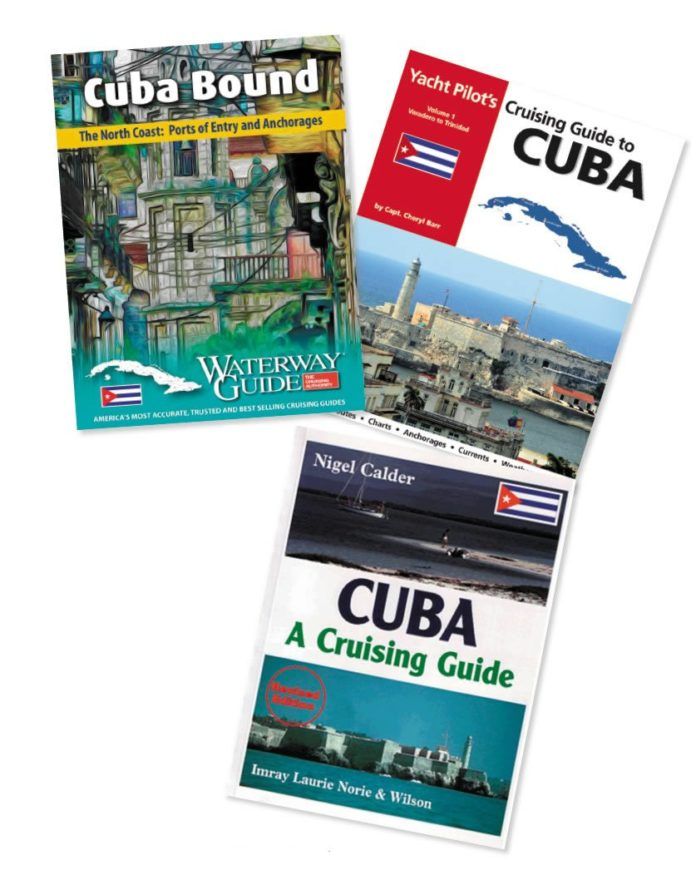
Although Cuba is terra incognita for many Americans, it has been a popular destination for Canadian and European cruisers for more than a decade. Here, we look at some resources for cruisers planning-or dreaming of-a cruise to Cuba.
Few sources are as knowledgeable as Passagemaker Editor Peter Swanson, who has been writing about U.S. sailors restricted access to Cuba for some time. Passagemaker is organizing sailing rallies to Cuba this year, and while you don’t have to join a rally to sail to Cuba-you just have to meet the requirements laid out by the U.S. State Department-joining an organized rally streamlines the process.
Other resources weve found helpful in planning a voyage to Cuba include NV Charts (available in digital format), the Seven Seas Cruising Association (word-of-mouth updates from cruisers who have been there), and these three guidebooks:
Cuba Bound: The North Coast Ports of Entry and Anchorages ($40) is the newest guide in our library. It is from the publishers of the Waterway Guide, which was highly rated in our most recent comparison of guides to the Intracoastal Waterway (see PS, January 2015 online). Waterway Guide has a relatively strong online component with an active community of contributors, so even if you don’t buy the Cuba guide, you can use the publishers website for updates on marinas and other relevant information.
Wally Moran, a regular contributor to Waterway Guide with multiple trips to Cuba under his belt, contributed much of the information to the guide. The book itself is relatively thin, with glossy photos helping fill out the 100 pages, but like all of the Waterway Guide Media publications, it is a pleasure to read, and covers the essentials in an intelligent format.
Waterway Guides long experience with creating chart books is evident in the brightly colored chartlets covering main ports and anchorages. But this is not a comprehensive cruising guide suitable for exploring nooks along the coast. The primary focus is on getting there, the arrival, and the main ports of entry. It features details on typical routes, navigation guidance for ports of entry, and tips on clearance formalities, provisioning, and living aboard.
Yacht Pilots Cruising Guide to Cuba ($50), written by Capt. Cheryl Barr, is also relatively new (published in 2013), and it has updated some of the outdated information in author Nigel Calders 1999 Cuba guidebook (below). The Yacht Pilot guide covers the north and south coasts of western Cuba, describing the counterclockwise route around the western tip, Cabo San Antonio. The book is 224 pages long and is filled with dozens of detailed chartlets and specific navigation instructions.
With tips on everything from where to buy fresh-baked bread to making windward progress along the coast, Barrs book is about as good a combination of navigation/travel guide as youll find for cruising. The publication is well-balanced, with more emphasis on chartlets than glossy photos.
Yacht Pilot Publishing also publishes guides to the Canadian maritimes and Down East Maine. A second book in the Cuba series on completing the island circuit is due out later this year. Barr also has a website that offers regular updates to her guidebooks.
Cuba: A Cruising Guide ($57), written by Calder, is the oldest book in our library. Published in 1999 by Imray Laurie Norie & Wilson (the same publisher of Don Streets familiar guides to the Caribbean), Calders book is the thickest guide to the area that weve found and offers detailed descriptions of anchorages, even ones that the other guides miss. It is, as far as we know, the only English-language cruising guide that covers the entire island.
Calder, who is best known for his indispensable marine-electronics textbook The Boatowners Mechanical and Electrical Guide (available in PSs online bookstore at www.practical-sailor.com/books), is an experienced writer and cruiser, and it shows in his work. Except for a centerspread series of alluring photos, Calders Cuba guide is filled mostly with chartlets and descriptions of anchorages. The only drawback is the dated nature of the information, especially regarding shore facilities, as much has changed in the last 15 years. We found that Barrs book helps fill in the gaps. Certainly, you could get by with Calders book alone, but Barrs updates come in handy, and her chartlets are well rendered.
If you know of other useful resources for cruising to Cuba, email them to us at [email protected].







































